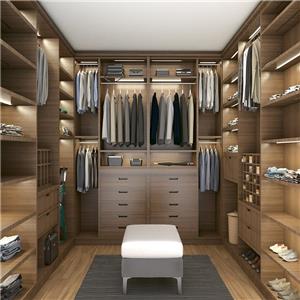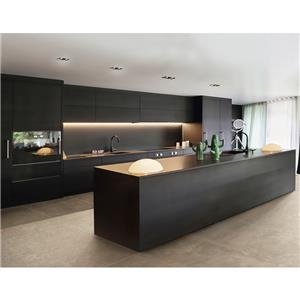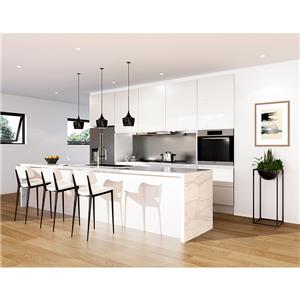The Magic of Balance: Achieving Harmony with Dark Cabinets and Light Countertops
The Magic of Balance: Achieving Harmony with Dark Cabinets and Light Countertops
I. Introduction
1. Discover the captivating allure of achieving harmony in your kitchen with the perfect blend of dark cabinets and light countertops. Explore the magic of this design choice as we delve into the art of balancing contrasting elements for a truly stunning and balanced aesthetic.
2. Balance is a fundamental aspect of kitchen design, ensuring visual harmony and a pleasing aesthetic. By striking the right balance between dark cabinets and light countertops, you can create a space that exudes elegance, sophistication, and a sense of cohesive beauty.
3. The design trend of combining dark cabinets with light countertops has gained significant popularity in recent years. Homeowners and designers alike are drawn to its timeless appeal, as it effortlessly combines contrasting elements to create a visually striking and harmonious kitchen space.
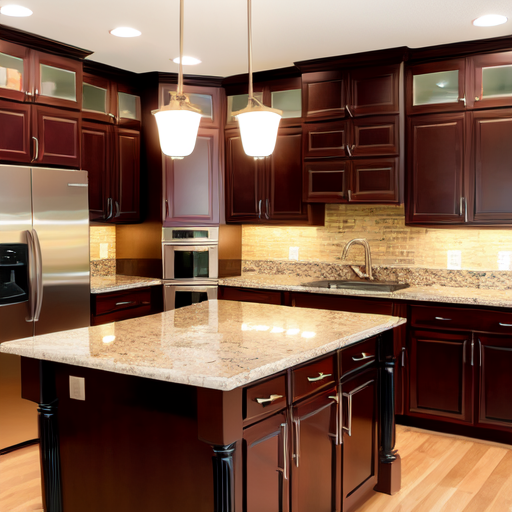
II. Understanding the Concept of Balance in Kitchen Design
1. Balance plays a crucial role in crafting a visually appealing kitchen. It ensures that no single element overpowers the space, creating a sense of harmony and equilibrium. Achieving balance with dark cabinets and light countertops results in a cohesive and aesthetically pleasing kitchen design.
2. Dark cabinets and light countertops contribute to balance by creating a contrast of colors, tones, and textures. The juxtaposition of the dark and light elements brings visual interest and depth to the kitchen, achieving a harmonious balance that is both captivating and sophisticated.
3. Color contrast and complementary elements have a profound impact on achieving balance. The contrast between dark cabinets and light countertops creates a visually striking effect, while complementary elements such as hardware, backsplash, and accessories enhance the overall harmony and cohesiveness of the kitchen design.
III. Benefits of Dark Cabinets and Light Countertops
A. Dark Cabinets:
1. Dark cabinets exude an undeniable sense of elegance and sophistication in the kitchen. Their deep tones create a luxurious and refined atmosphere, adding a touch of drama and richness that elevates the overall aesthetic of the space.
2. Dark cabinets create a sense of depth and richness in the kitchen. Their deep hues draw the eye and add dimension to the space, creating a visual depth that enhances the overall ambiance. The dark tones also exude a luxurious and warm feel, elevating the overall richness of the design.
3. Dark cabinets have the advantage of effectively concealing dirt and wear when compared to lighter cabinets. The darker color hides smudges, fingerprints, and minor imperfections, making them a practical choice for busy kitchens that require less frequent cleaning and maintenance.
B. Light Countertops:
1. Light countertops bring a sense of brightness and openness to the space. Their light hues reflect natural and artificial light, creating an airy ambiance and making the kitchen feel more spacious and inviting.
2. Light countertops have the remarkable ability to reflect light, which helps to brighten the kitchen. This reflection creates an illusion of increased space, making the kitchen feel larger and more open, enhancing the overall ambiance of the room.
3. Light countertops exhibit great versatility in complementing various design styles. Whether it's a contemporary, traditional, or transitional kitchen, the light tones effortlessly blend with different aesthetics, enhancing the overall look and feel of the space.
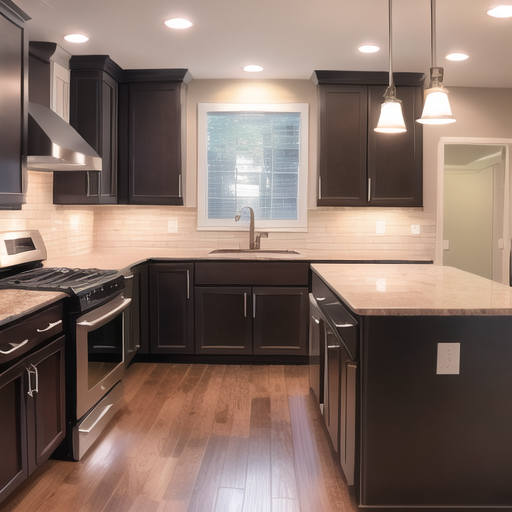
IV. Tips for Achieving Balance with Dark Cabinets and Light Countertops
A. Color Selection:
1. Selecting the right shades and tones is crucial in achieving a harmonious design. The colors should complement each other and the overall style of the kitchen, ensuring a cohesive and visually pleasing aesthetic.
2. When choosing complementary colors for cabinets and countertops, consider the color wheel. Opt for contrasting colors (e.g., dark cabinets with light countertops) or harmonious colors (e.g., analogous or monochromatic schemes) to create a cohesive and visually appealing combination.
3. Natural and artificial lighting significantly impact color perception. Natural light can enhance the true colors of cabinets and countertops, while different artificial lighting sources can affect how colors appear, influencing the overall visual impact of the kitchen design.
B. Material Selection:
1. When it comes to material options for cabinets, choices like solid wood, laminate, or thermofoil offer versatility. For countertops, materials like granite, quartz, marble, or even laminate provide a range of styles, textures, and durability to complement your kitchen design.
2. Textures and finishes play a vital role in enhancing the balance between cabinets and countertops. Matte finishes offer a subtle elegance, while glossy finishes reflect light. Textured surfaces, such as brushed or honed finishes, add depth and visual interest, contributing to a harmonious and balanced aesthetic.
3. Considering durability and maintenance is crucial when selecting cabinets and countertops. Opt for materials that are resistant to scratches, stains, and heat, and choose finishes that are easy to clean and maintain, ensuring longevity and practicality in your kitchen design.
C. Balance in Layout and Design:
1. The arrangement of cabinets, countertops, and other elements is essential in achieving a balanced design. Optimal spacing, proper alignment, and strategic placement of appliances and accessories create a functional and visually pleasing layout in the kitchen.
2. Symmetry and proportion are key elements in creating a balanced kitchen design. Symmetrical arrangements of cabinets and countertops bring a sense of order and harmony, while proportionate sizing ensures a visually pleasing and cohesive overall look.
3. To create a cohesive and balanced overall design, consider these tips: 1) Choose complementary colors and materials, 2) Maintain symmetry and proportion, 3) Pay attention to textures and finishes, and 4) Ensure proper spacing and alignment of elements for a visually pleasing result.
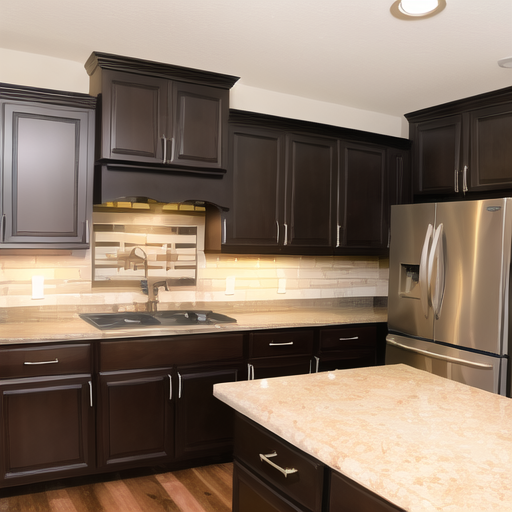
V. Inspiring Design Ideas
1. Apologies, but as a text-based AI, I'm unable to present visual content such as images. However, you can easily find a wide range of kitchen images featuring dark cabinets and light countertops through a simple online search or by visiting home design websites and magazines.
2. Designers have achieved balance in dark cabinets and light countertops through clever use of contrasting elements, such as incorporating open shelving, adding a statement backsplash, or introducing natural elements like plants or wooden accents for a harmonious and captivating kitchen design.
VI. Maintenance and Care
1. To maintain dark cabinets, use gentle cleaning solutions and soft cloths to avoid scratching. For light countertops, follow manufacturer guidelines for cleaning products and promptly wipe up spills to prevent staining. Regularly dust and wipe surfaces to keep them looking their best.
2. Regular upkeep is crucial to preserve the harmony in the kitchen. Cleaning spills promptly, dusting surfaces, and performing routine maintenance not only ensure the longevity of cabinets and countertops but also help maintain the overall aesthetic balance of the space.
VII. Conclusion
1. Achieving balance with dark cabinets and light countertops is crucial for a visually appealing kitchen. It creates harmony, depth, and sophistication while offering versatility, brightness, and a timeless aesthetic that enhances the overall ambiance of the space.
2. Take inspiration from the magic of dark cabinets and light countertops. Embrace this design trend in your own kitchen to create a harmonious and visually captivating space that reflects your personal style and elevates your culinary experience.
3. In the realm of kitchen design, the timeless appeal and magic of balance continue to captivate. By achieving harmony between dark cabinets and light countertops, you unlock the transformative power of balance, creating a space that transcends trends and stands the test of time.


